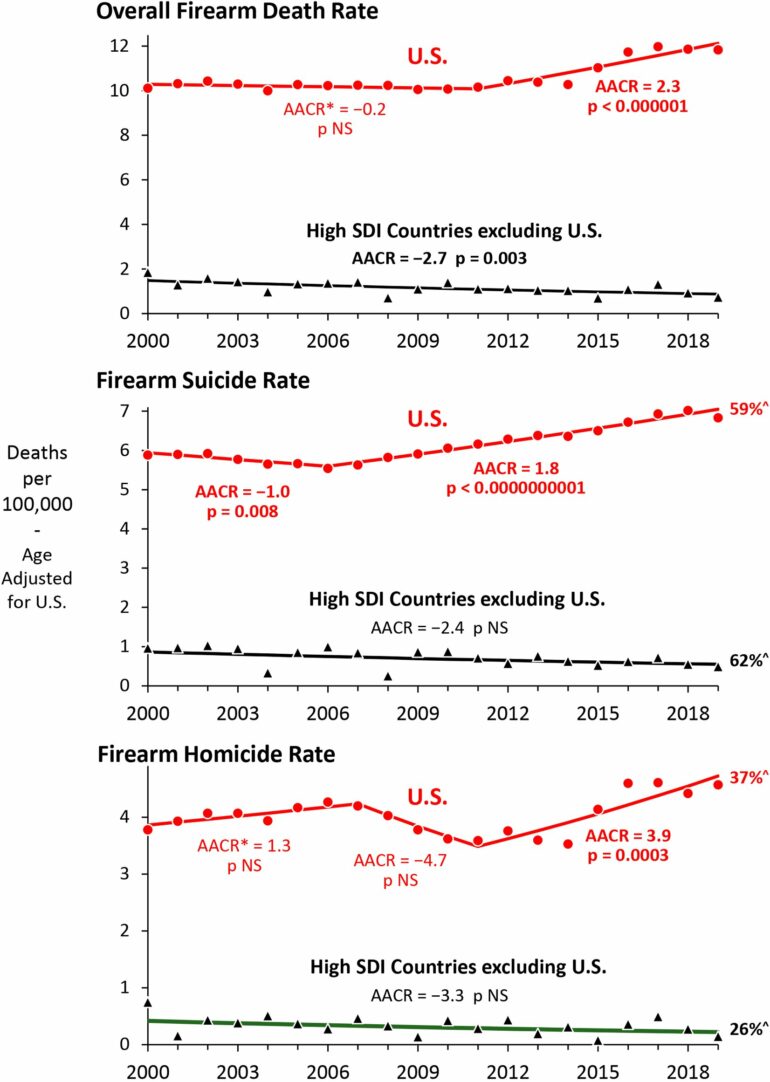Archie Bleyer, M.D., remembers the day his research focus shifted. His 12-year-old grandson’s classmate and soccer teammate died by a firearm. He knew the boy’s mother and said that her son “left a note and used the gun, but didn’t need to die because he had a bad day.”
In another instance, his patient awoke when hearing his son kill himself with a gun.
These events changed Bleyer’s life.
Bleyer is a clinical research professor at the OHSU Knight Cancer Institute. He has been a pediatric oncologist since 1971, focused on prevention and treatment of cancer in the adolescent young adult population, ages 15 to 39. He continues to do cancer research, but in the past decade, his attention has turned toward a disturbing trend: More young people are now dying from bullets than from cancer. And the number is going up.
Bleyer is lead author of a recent study in the journal PLOS ONE examining mental health disorder and firearm data from 2000 to 2019. Using data from the Institute for Health Metrics and Evaluation Global Health Burden, the researchers compared the United States to 40 countries with similar sociodemographic profiles. They found that while the prevalence of mental health disorders in the U.S. is similar in all major categories to its 40 comparable sociodemographic countries, death by firearms is 20 times greater.
“We have the same degree of mental health issues as other countries, but our firearm death rate is far greater and continuing to increase,” Bleyer said. “In most of the countries, firearms deaths are decreasing.”
Since 2000, the rate of total firearm deaths increased 23%. In the other 40 countries combined in the study, firearm deaths were down 27% in that same time.
“Every other country, deaths by firearms went down, despite a similar amount of mental health disorders,” Bleyer said.
Bleyer has been invited by Texas Doctors Working to End Gun Violence to present study findings at the Texas State Capitol on Friday, Sept. 27.
Bleyer said it is important to note this study does not undermine the mental health crisis in the U.S.
“We do have significant mental health problems, there is no doubt about that,” he said. “We don’t have enough mental health providers, facilities, treatments. It’s the way that we have facilitated killing ourselves that leads to death with firearms, where we take this to the extreme.”
Bleyer said polling shows that most of the public, as well as leaders in both major political parties, believe that mental health disorders are to blame for the high U.S. firearm death rate. His study points to a different correlation: Firearm deaths by suicide increased 18% over the past decade, and gun deaths by homicide went up 39% since 2000. In all 40 countries in the study, those same rates went down despite similar, or in some cases higher, mental health disorder rates.
The difference is simply guns. The U.S. has 4% of the world’s population, but almost 25%, or one in four, of the world’s firearms—and half of its non-military assault weapons—are in U.S. households. Bleyer said this percentage is increasing.
“Firearm deaths are a public health crisis in the U.S.,” Bleyer said. “Mental health disorder prevalence does not explain the higher firearm death rate. The difference is we have a way in this country of taking those mental health problems to the extreme by using firearms, which lead to death.”
More information:
Archie Bleyer et al, Fallacy of attributing the U.S. firearm mortality epidemic to mental health, PLOS ONE (2024). DOI: 10.1371/journal.pone.0290138
Provided by
Oregon Health & Science University
Citation:
Prevalence of firearms in US drives public health crisis of gun deaths, study finds (2024, September 9)



